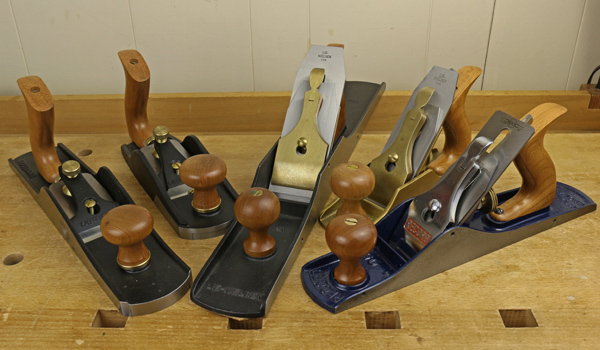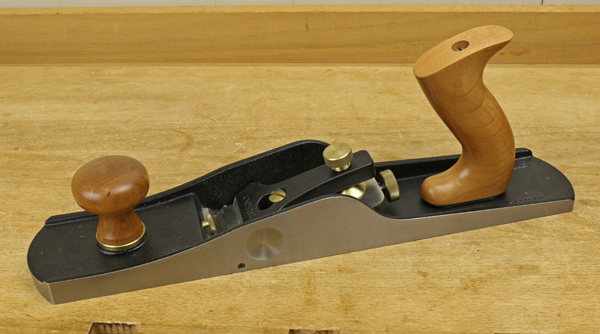
One of the biggest challenges in learning woodworking is assembling a basic tool kit. The choices can seem technically overwhelming, not to mention disturbingly expensive. This post is the first in a series to guide the novice to intermediate woodworker in intelligently building a set of tools for making general furniture and household accessories.
This guide can also be used to create a minimalist’s tool kit. Many hobbyists cannot commit the money, time or space to go whole hog on woodworking but still want to enjoy the craft and produce fine quality work. Yes, that can be done!
Three guiding principles
1. Buy tools that make functional sense early on and will continue to be useful as your skills develop. Avoid “starter” tools. Your first tools should integrate into your tool kit no matter how expansive it gets.
2. Buy right and buy once. Cheap tools are false economy and will hamper skill development. There are few craft experiences more frustrating than struggling with a $50 tool only to have to junk it and replace it with the $100 tool that the little voice in your head was telling you to buy in the first place.
3. Quality must underlie versatility. Imagine you own a baseball team and with limited funds you can choose three specialist backups who are average players with limited talent — a second baseman, left fielder, and catcher — or you can choose just one outstanding athlete who happens to play center field. I’d take the latter every time because the quality athlete will, after some practice, probably play the other positions better than the players with limited talent ever will. Furthermore, the manager can adapt the game strategy to take advantage of the talented player’s strengths.
And so it is with tools. Mediocre tools are inherently limited in the results they can produce. An excellent tool allows you to expand your ability without limits, even if sometimes for the sake of economy you have to alter your approach to a project.
Bench planes
You will probably spend more time at the workbench with a bench plane in your hands than with any other tool. The three basic types are determined primarily by length. The longest is the jointer at 22-24″, which is used for accurately truing surfaces and edges of boards. The long length of the sole bridges hollows and cuts down bumps to produce flat surfaces and straight edges.

The smoothing plane is the shortest at 8-10″ and produces the final beautiful surface on the wood. The short sole rides minute hollows and bumps to allow very thin shavings. The smoother comes last in the workflow, after the rough work and accuracy have been done with other planes.
The third member of the group is the jack plane. Intermediate in length at 14-15″, the jack’s traditional primary job is stock preparation. It can be set up to produce thick shavings to bring boards down to size and approximate flatness in preparation for the accurate work of the jointer. It also is usually called upon for all sorts of general planing tasks in the shop.
In the photo above, back to front, are jointer, jack and smoothing planes.
Choosing a bench plane – just one
Should you buy a mediocre set of three to cover all tasks and use them until you gain more skill? No — see the three principles above. Instead, I recommend a fine quality jack plane, which will always be useful in the shop and can also do an adequate job truing and smoothing — in fact, better than a cheap jointer and smoother would perform their specific jobs.
With some extra care and specific tuning, a jack can be made to produce accurate surfaces and edges, especially in small to mid-sized work. With different specific tuning and perhaps some extra effort, it can also produce excellent surface quality on the wood.


There are many plane designs to choose from. A partial list includes the familiar iron body variety, infill planes, traditional (18th century) wooden planes, Japanese wooden planes, Krenov-style shop-made planes, Chinese-style wooden planes, and Aussie-style high angle planes. On the bases of accessibility of options, ease of adjustment and maintenance, and versatility, I suggest iron body planes for most woodworkers, especially for a jack plane.
OK, a good quality iron jack plane is the way to start, but hold onto your wallet because there remains another major choice to be made: a bevel-down jack (top photo above) versus a bevel-up jack (bottom photo above). This issue confuses many woodworkers but will be cleared up in the next post in this series. (Spoiler alert: they both work!)
Further, we’ll look at tuning and blade preparation options for your jack plane of either type that can greatly broaden the capabilities of a single plane.

Share tips, start a discussion or ask one of our experts or other students a question.
No Responses to “Tools to Get Started in Woodworking: Bench Planes”